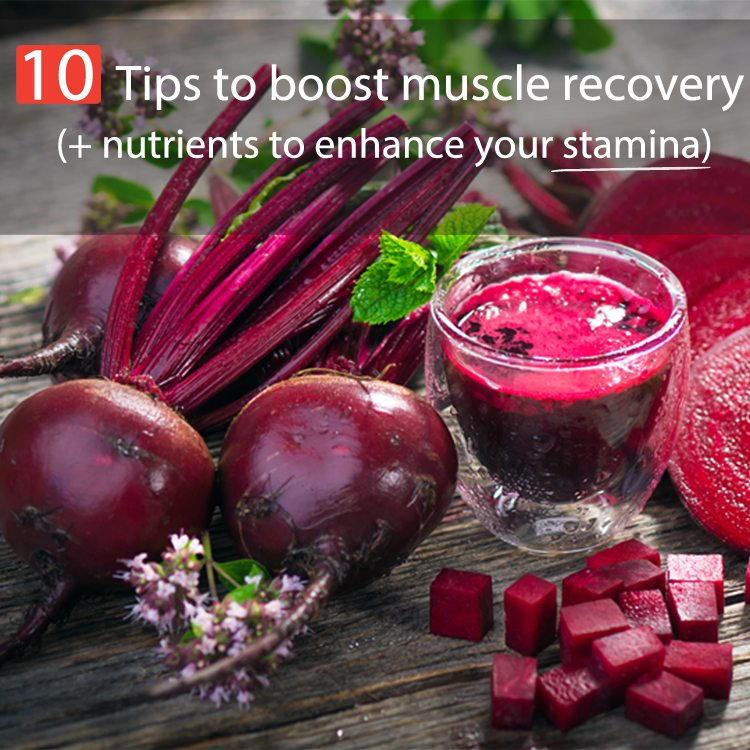When I was doing my internship, my favorite way to unwind after an exhausting day in the ICU was to hit the gym or go for a long run. The little soreness that came with the workouts was mostly pleasant. But there were times when the soreness was so severe; it became a big ol’ pain in the gluteus maximus (especially when patients told me with a smirk ‘you look in worse shape than I am!’). At that time, the only (unhelpful) advice I got was to pop a pain-killer, get a massage, take an ice bath or suck it up. My beef with these recommendations was that (1) pain killers and other NSAIDs have nasty side effects, (2) I couldn’t afford professional massages and (3) ice baths are painful! So I chose to suck it up. Good news: you don’t have to. Keep reading to discover nutrition strategies that will alleviate muscle pain and speed up recovery so that you can hit it hard again and boost your performance, muscle gain or fat loss.
1. Hydrate (with water).
I know, I know, this is probably the oldest advice ever but the fact remains that dehydration will seriously impact your recovery rate by inducing delayed onset muscle soreness. In fact, researchers found that runners who became dehydrated during a downhill run in the heat experienced much greater muscle pain than those who drank liberally throughout their run.
You see, the body needs water to regulate its core temperature, muscle and heart function. Being as little as 2 percent dehydrated will decrease your stamina and performance. That’s because less water in your body equals a drop in blood plasma volume which means that less energy will be available for your muscles. That’s not all; research also suggests that, by adversely impacting the testosterone-to-cortisol ratio, dehydration delays recovery.
How much do you need: At least 0.7 ounces per pound of body weight.
When: Drink up throughout the day, not just during or after working out.
Check out this video to better understand what exactly muscle soreness is: [youtube id=”PUJpU6Ti5jU”]
2. Become best friends with the beetroot.
Scientists from St Louis University reported that compared to athletes who ate cranberries, those who consumed the purple root before hopping on the treadmill were able to run 5km (about 3 miles) faster! The volunteers ‘running on beets’ were also able to speed up by 5% during the last 1.1 miles.
‘What’s in the beetroot and why cranberries?’ you’re probably wondering.
Equivalent amounts of cranberry relish and beetroot have a similar caloric content but unlike the beet, the cranberries aren’t rich in nitrates.
The researchers speculate that the high nitrate levels in the beetroot improve exercise performance by boosting blood levels of nitric oxide. Higher blood concentrations of nitric oxide widen blood vessels, decrease the amount of oxygen which muscles need for energy (ATP) production and improve the efficiency of muscle contraction. Put simply, having more nitric oxide in your blood when you exercise makes your muscles more effective at utilizing energy.
How much do you need: 200 grams (7oz) of grated, baked or steamed beetroot.
When: 1 hour before your workout.

Don’t like eating beets? Drink ‘em!
In another study, researchers found that beetroot juice could improve endurance of moderately trained athletes by 16% – if you can normally run 1 full hour before hitting the wall, drinking that juice before running could allow you to keep going for an extra 10 minutes.
Note: Don’t freak out if your pee turns orangey-pink– you’re not turning into an alien; it’s normal for some of the beet’s natural pigment to get excreted in the urine.
How much do you need: At least two 250ml cups (about 8.5oz) of beetroot juice.
When: 2 to 3 hours before your workout and/or immediately after your workout.
Tips:
- Beetroot juice has a slightly earthy aftertaste – to ‘hide’ that taste, simply add in a chopped apple.
- Keep the greens – they’re loaded with antioxidants.
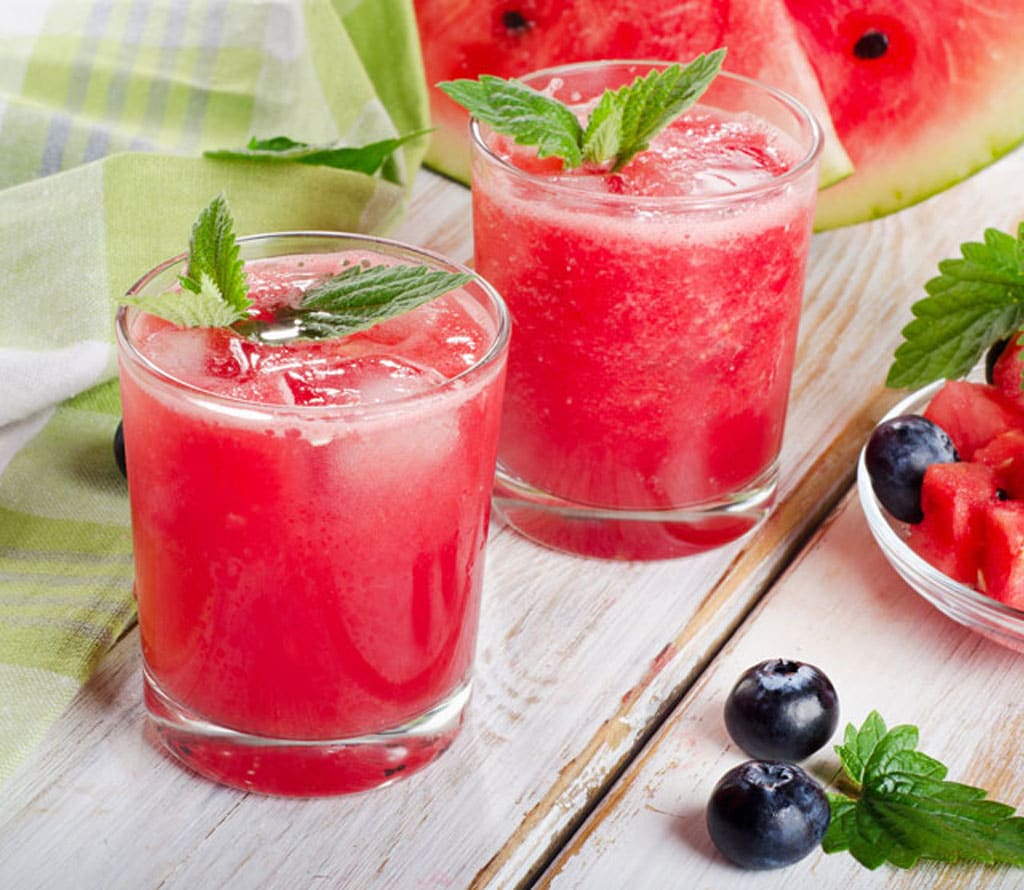
3. Try watermelon post workouts.
Highly prized among athletes, the juice of this tropical fruit can relieve muscle soreness after exercise. Scientists found that watermelon juice is packed with L-citrulline – this amino acid can reduce muscle soreness by speedimg up the removal of hydrogen ions that are formed when lactic acid is broken down.
Since the body converts L-citrulline to L-arginine (another amino acid) and nitric oxide, consumption of watermelon juice can also reduce your recovery heart rate by dilating veins and arteries to enhance blood blow. L-citrullin may even improve glucose transport to skeletal muscles, thus providing more fuel to your muscles.
These three effects can boost your athletic prowess by enabling you to train more intensely and recover faster after each workout.
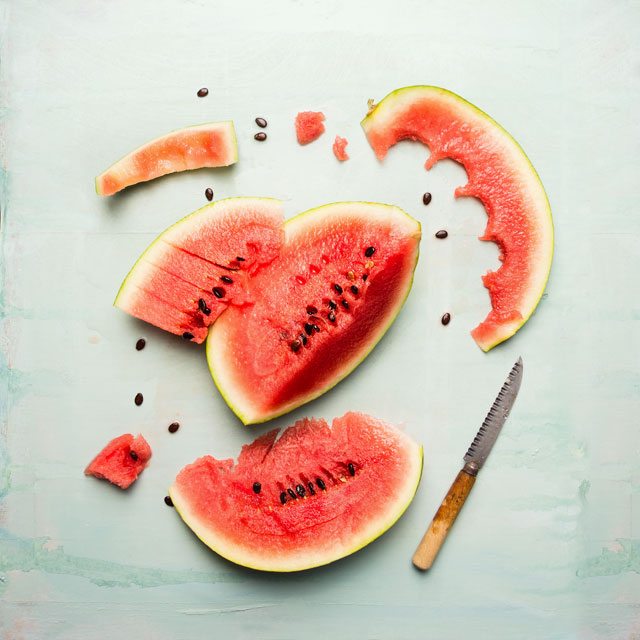
How much do you need: At least 500ml of pure watermelon juice – if you use a juicer make sure to retain the fiber. This will help slow down the absorption of the fruit’s natural sugar in your bloodstream and hence provide a more sustained release of energy.
When: 1 to 2h before your workout.
Note: If you’re trying to burn fat, eat the whole fruit instead of juicing it. But if your goal is to replenish your glycogen stores, then juice is your best option (unless you have the metabolic syndrome or insulin resistance).
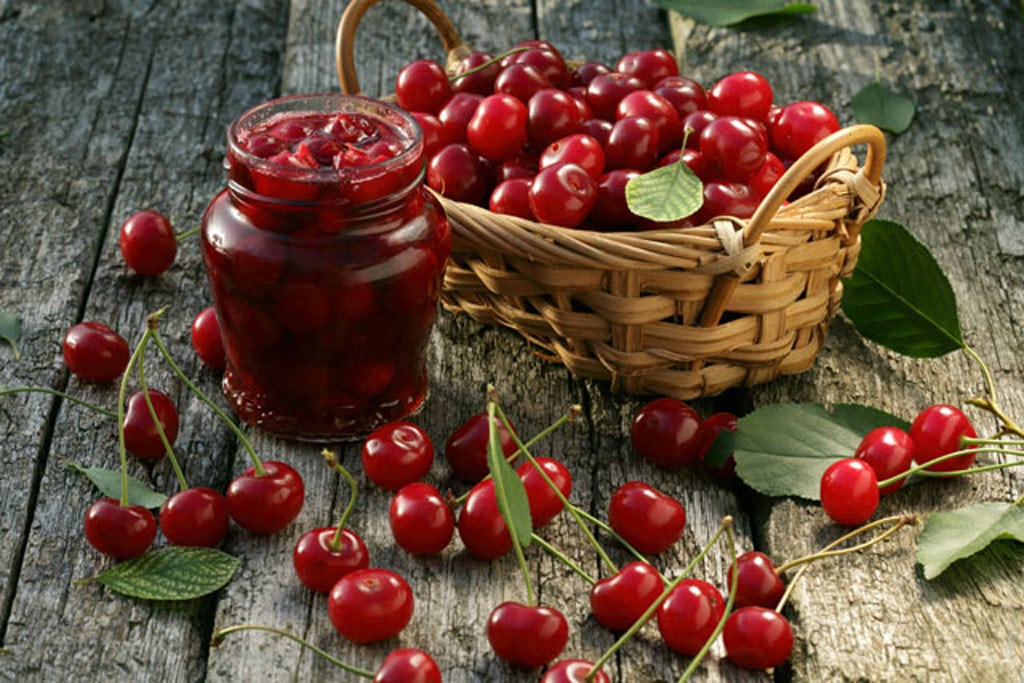
4. Get more dark-colored fruits in your diet.
I’m talking about fruits such as blueberries, tart cherries, watermelon, blackberries, strawberries and pomegranate. Studies indicate that they reduce delayed onset muscle soreness and can help you recuperate faster.
Let’s consider tart cherries since they have been specifically tested in exercise studies. Did you know that these little red gems can be a perfect complement to a training routine? Not only can they hasten muscle recovery, but these antioxidant packed fruits can also stifle pain and inflammation after a run.
According to a British study, trained athletes bounced back to 90% of their normal muscle force within 24 hours after drinking cherry juice. Without the juice, they only returned to 85% of their normal muscle strength during the same time frame. The scientists reported that this difference could have a considerable effect on the athlete’s next performance. The researchers believe that the cherries’ high concentration of anthocyanins, potent antioxidants, may promote faster muscle recovery by slashing the wear and tear which usually occurs when the muscles are maxed out.
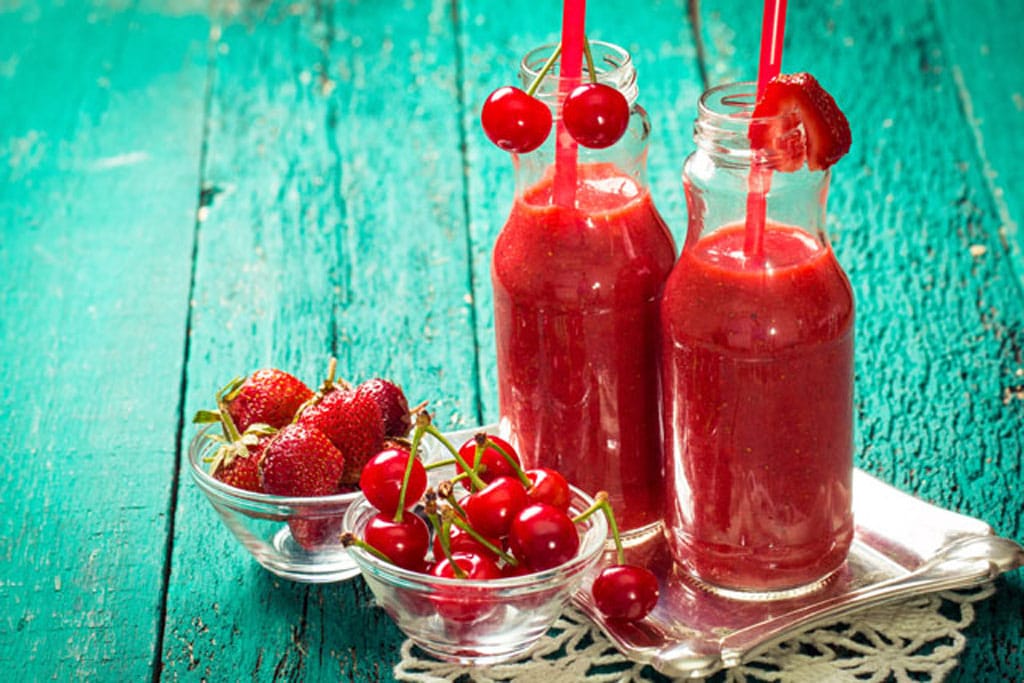
That’s not all, tart cherries are good sources of melatonin, a natural compound that can help you sleep better – quality sleep is need for optimum recovery.
How much do you need: 12 ounces of concentrated juice or 1/4 pound organic tart cherries, pits removed.
When to consume cherries: Twice daily for 7 days before intense training and 2 days following training.
Tips:
- Milk products don’t play well with cherries and berries – evidence suggests that proteins in milk interfere with the antioxidant activities of these fruits on the body. So, if you’re a whey protein shake aficionado, wait at least 1 hour after the shake to take cherries or berries.
- Tart cherries are well… tart. To make the juice more palatable and refreshing, throw in some strawberries and a few slices of cucumber instead of dumping in sugar.
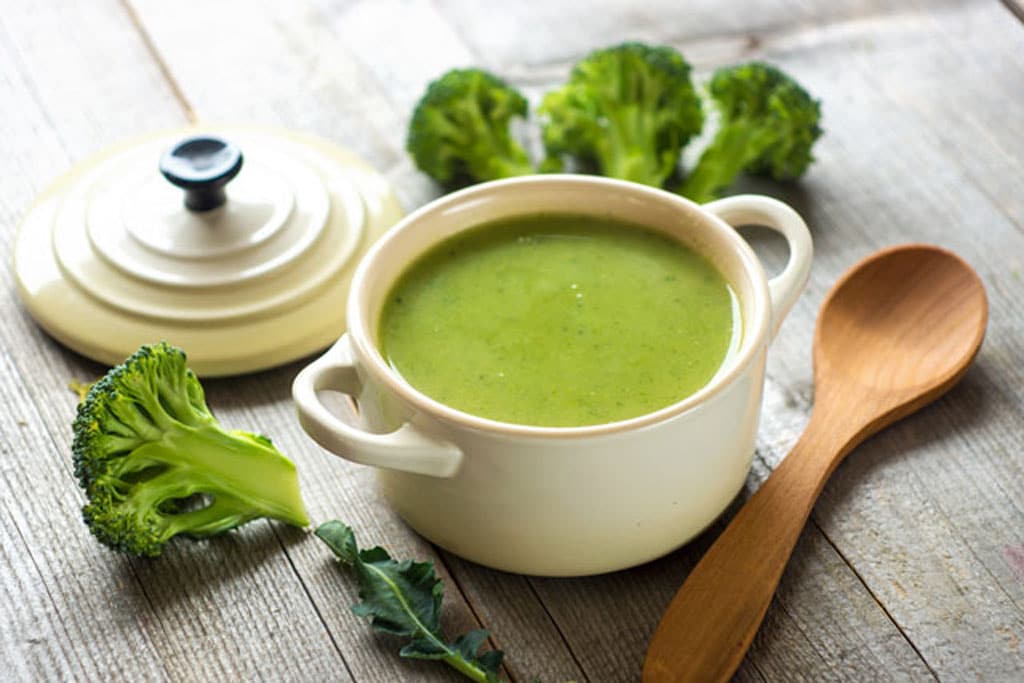
5. Add some greens and cruciferous veggies to your meals.
Leafy greens such as spinach, bok choy and watercress and cruciferous veggies like broccoli, kale and cabbage can reduce cortisol levels after a tough training – this can improve your body composition with time. Plus they are loaded with anti-oxidants that can reduce post-workout inflammation.
One particularly interesting green veggie when it comes to exercise is the watercress. This one may come as a surprise but research suggests that this peppery-tasting green veggie may top the charts when it comes to antioxidant concentration. As such they are extremely effective at protecting cells against oxidative damage, especially DNA damage.

In fact, in a study, participants who consumed watercress experienced less wear and tear at the cellular level and were in better shape to train the following day. Their blood tests revealed higher levels of xantrophylls as well as alpha- and gamma-tocopherols. These antioxidants appeared to protect DNA against execise-induced oxidative stress.
How much do you need: About a cup per day.
When: For noticeable effects, you need to consume watercress regularly over a period of at least 2 months to allow the antioxidants to build up.
Tip: You can mix watermelon and watercress with some nuts and feta cheese and serve with some grilled salmon. Don’t like chewing a lot? Then try a green watercress smoothie.
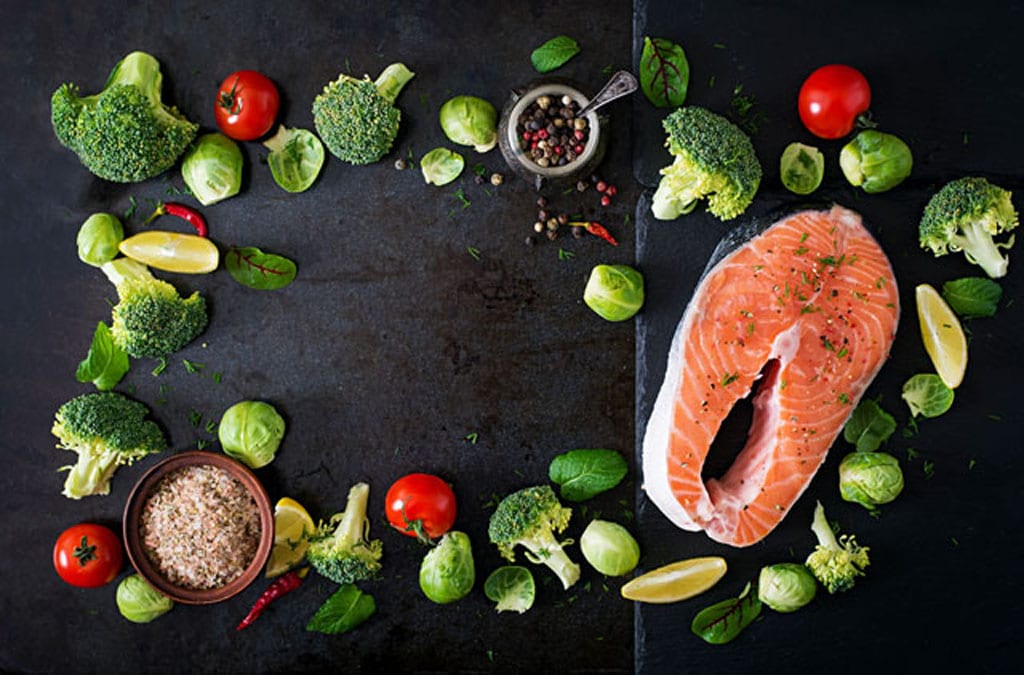
6. Enjoy wild, fatty fish.
Wild fatty fish such as salmon and cod are definitely priceless catches for those who train hard: it’s rich in two powerful healing nutrients namely protein and omega-3s. Plus these fish are also good sources of vitamin D and calcium – these two nutrients promote bone health as well as muscle and immune function.
Running induces micro-tears in muscle fibers – nothing alarming here, this is a normal process. To repair these worn-out muscles, torn ligaments and bruised tendons you simply need protein.
But why exactly are omega-3s even more important for those who exercise regularly?
For many reasons actually:
- Omega-3s reduce muscle damage. By promoting the activation of key enzymes involved in protein synthesis, omega-3s are able to lower the rate at which muscle (protein) damage occurs.
- Omega-3s increase collagen synthesis in tendons and ligaments. Put simply, omega-3s can speed up recovery from intense workouts and may also help sprains, strains and overuse injuries heal faster thus allowing for a prompter return to training.
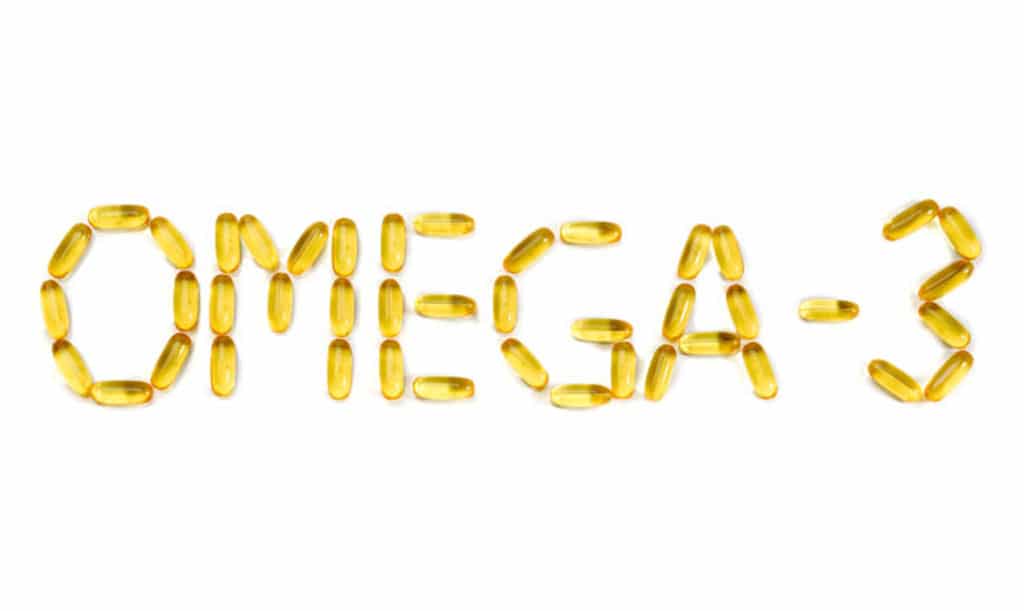
- Omega-3s tone down inflammation. Long runs can degrade the body’s muscles and soft tissues. This process can, in turn, stimulate oxidative stress and inflammatory responses in muscles. The more serious the muscle damage is, the more inflammatory processes (like cytokines, leukotrienes and prostaglandins) the body will produce. And the more inflamed your muscles are, the more painful they’ll be. That’s where omega-3s come in handy: they can suppress T-cell response and reduce the production of the inflammatory markers mentioned. In other words, these fatty acids can reduce muscle soreness.
Tip: Try to consume wild fish instead of the farmed ones which are grain-fed and thus have a higher omega-6 to omega-3 ratio.

7. Give some love to your gut – try fermented foods as condiments.
Since 70-80% of our immune system is in our gut, it makes sense that an unhealthy gut will delay recovery and increase your risks for various conditions. You see, a healthy gut is essential for:
- Nutrient absorption (as you’ll discover below, various nutrients are involved in tissue repair).
- Removal of waste by-products naturally produced during intense workouts.
- Keeping oxidative stress and inflammation under control.
- Boosting your immunity for a rapid, pain-free recovery from a tough workout.
How much do you need: At least 2 tablespoons, 5 times per week, of fermented foods such as sauerkraut, kimchi, kefir or beet kvaas.
You can also take quality probiotics (especially soil based ones) if you want.
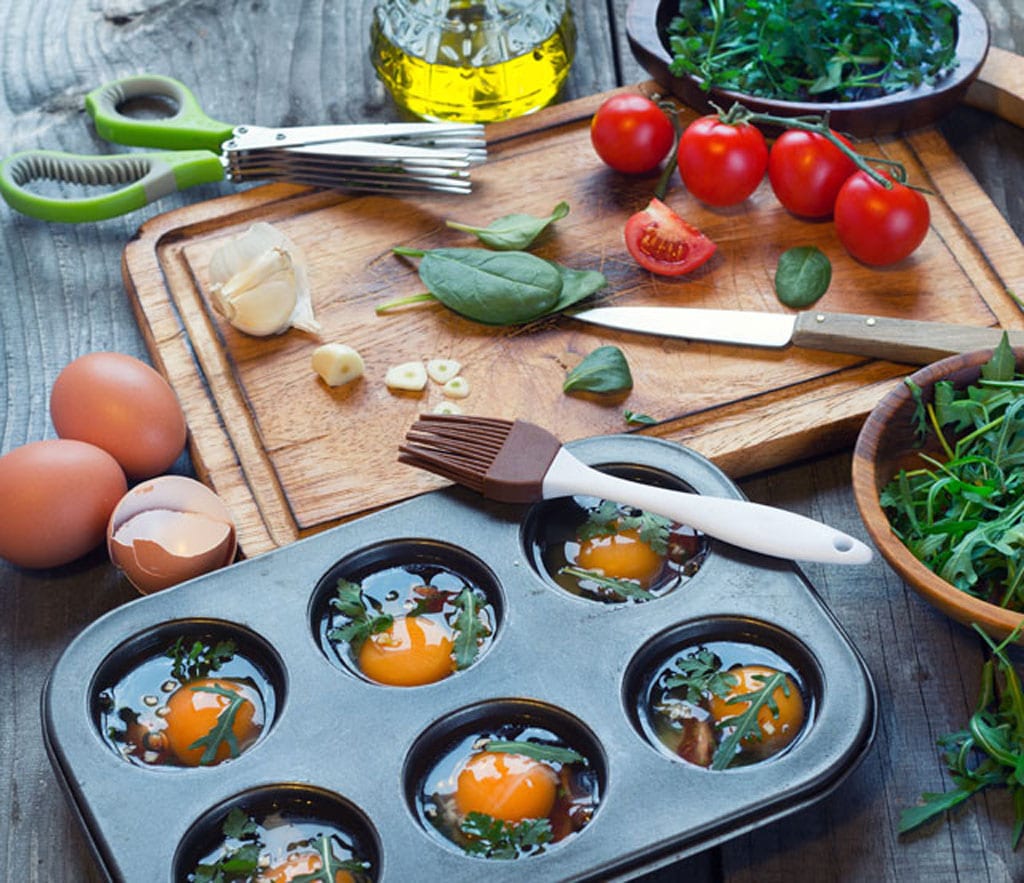
8. Don’t be scared of eggs – they don’t cause heart disease.
Besides being terrific sources of protein, eggs are also naturally loaded with leucine, an amino acid that plays an important role in muscle building. Research also indicates that eggs can enhance energy production to facilitate recovery from intense training while curbing inflammation thanks to the antioxidants selenium, lutein and zeaxanthin they contain.
Tip: Just boil a few eggs in advance – they’ll come in handy when you need a quick pre-workout or post-workout snack.
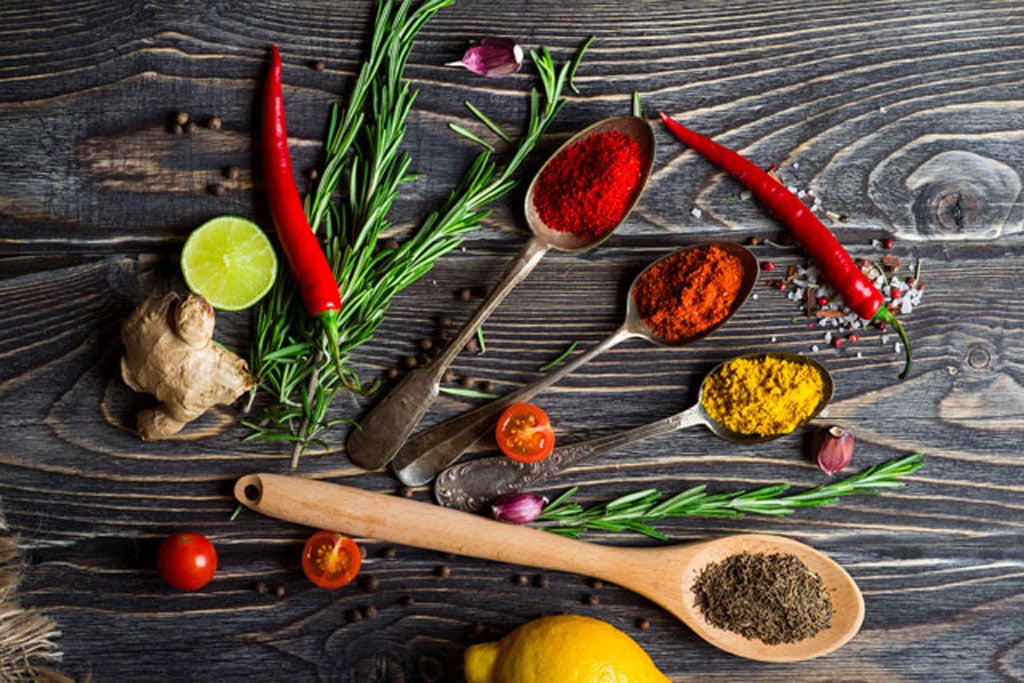
9. Spice up your meals with cinnamon, turmeric and ginger.
These spices won’t simply add some zing to your meals – they can also promote tissue repair.
In one study, researchers found that female martial arts athletes who took cinnamon powder with their meals experienced reduced delayed onset muscle soreness after intense eccentric training. It appears that this little spice can promote tissue repair and recovery by enhancing protein synthesis by improving insulin sensitivity.
Scientists reported that curcumin in turmeric had anti-inflammatory properties which could help alleviate pain – MRI scans showed that subjects who took turmeric experienced less muscle injury compared to the control group.
How much do you need: Between 1 to 3 grams daily (start with the lowest amount first).
How to use: Cinnamon and turmeric taste great in smoothies, teas, shakes and curries. You can add ginger to stir-fries, smoothies or muffins.

10. Get enough of the following nutrients.
Magnesium
Are muscle cramps, muscle weakness or dizziness hampering your training? These annoying symptoms could be linked to a magnesium imbalance. Studies suggest that endurance athletes are at heightened risks of a deficiency due to the metabolic needs of exercise and significant losses via urine and sweat (especially those who sweat about 1 liter per hour).
Magnesium status and athletic performance
Practically every cell in the body needs magnesium to function properly – being a vital mineral in over 300 biochemical reactions, magnesium is crucial for normal cardiac activity, nerve and immune function, muscle contraction and relaxation.
Scientists discovered that people with inadequate magnesium stores need more energy and more oxygen to perform low-level activities compared to when their magnesium status was normal.
Since magnesium is involved in the production of ATP – the energy source for muscle contraction – a shortfall of the mineral would limit energy production, causing erratic muscle contraction (cramping), lethargy and reduced power.
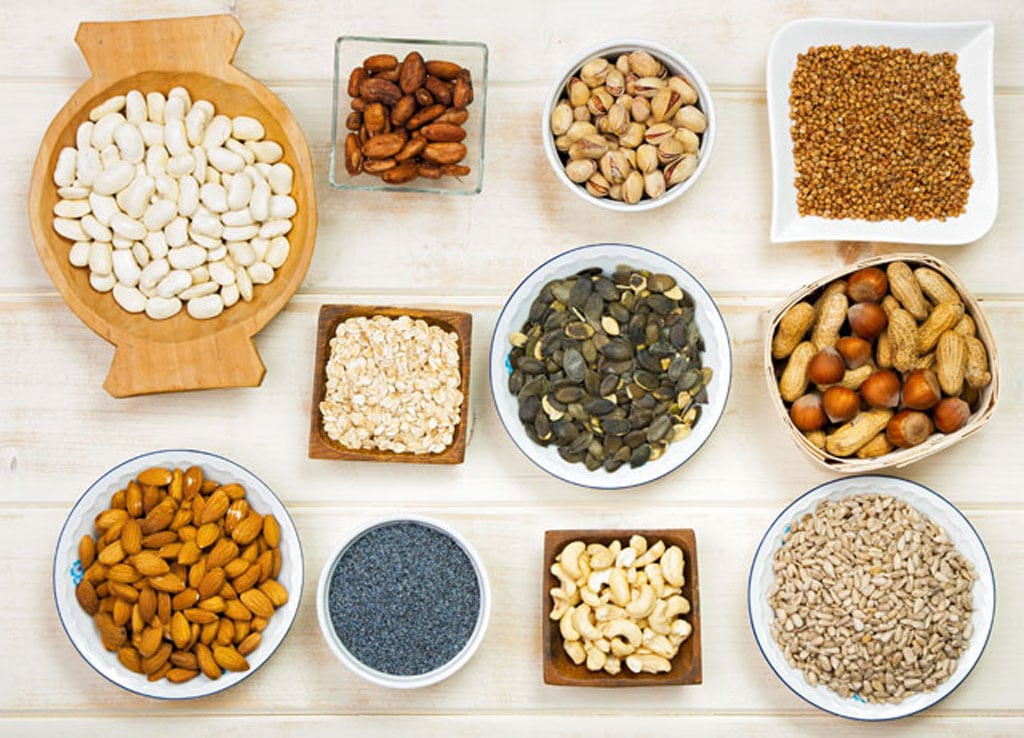
Research has also associated low levels of magnesium to a less efficient use of oxygen during exercise because the deficiency leads to increased muscle calcium retention. Higher levels of calcium in cells causes:
- Increased oxygen consumption
- Greater ATP requirements
- Muscle hyper-excitability that can lead to cramps and fatigue
Without sufficient magnesium to convert stored muscle glycogen into glucose, your muscles will not get the energy needed to function properly and muscle weakness may arise.
Magnesium also helps recovery and maintains muscle mass as it regulates protein synthesis.
Foods rich in magnesium include green leafy veggies, nuts, beans and seeds.
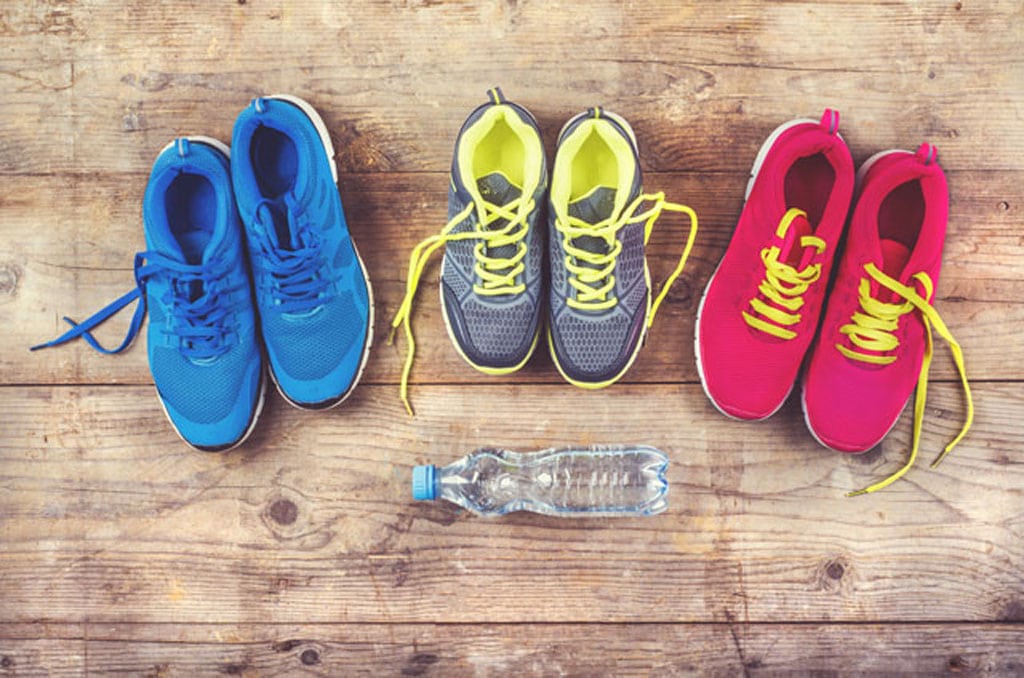
Your supplement’s profile
How much do you need: 5mg of supplemental magnesium per kg body weight.
How often: Daily, until symptoms subside. You can then take 300mg the night before an event and 100mg every hour for 3 hours on the day of the event.
Most easily absorbed forms: I personally prefer magnesium glycinate but you can also use taurate, malate, citrate or fumarate.
Tip: Boost absorption by taking your pill with water – popping magnesium with sodas or phosphate-containing sports drinks will inhibit absorption.
Iron
Do you often feel foggy after a run? If yes, it could be that your iron stores are depleted– studies suggest that those who train are more vulnerable to iron deficiency especially because:
- Exercise increases your iron demands to an extent that may be hard to meet with diet alone.
- Running is a high-impact exercise that can cause hemolysis – the repeated foot-strikes damage red blood cells and can cause runners to lose up to 1.5mg of iron.
- Athletes can lose about 0.3 to 0.4mg of iron per liter of sweat while exercising.
Iron status and athletic performance
Since iron is involved in the formation of hemoglobin, the red pigment responsible for oxygen transport, iron deficiency can reduce the oxygen available to your working muscles. These will then switch to anaerobic mode.
According to Thomas Fahey, Professor of Exercise Physiology at California State University, the lactic acid produced during anaerobic respiration is split into a lactate ion and a hydrogen ion. Build-up of hydrogen ions causes sore muscles, cramps and fatigue as they disrupt electrical signals in your muscles and nerves.
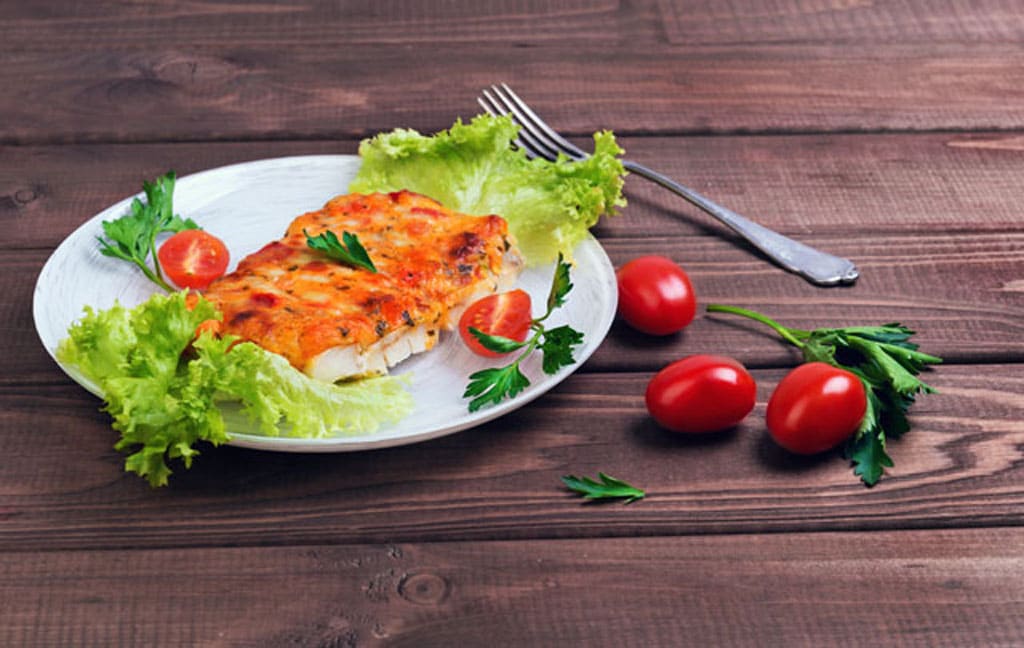
Foods sources of heme iron (type of iron which is more bioavailable) include red meat, chicken and fish.
Your supplement’s profile
Before you start popping pills, check your serum ferritin and total iron binding capacity (TIBC) levels and get a prescription from a physician.
How much do you need: 30 to 100mg of elemental iron over a period of 12 weeks (be wary of iron overload).
How often: Once a day (you can also split your pill in two if you experience nausea).
Most easily absorbed forms: Ferrous bisglycinate, sulphate, fumarate or gluconate.
Tip: Boost absorption by taking your pill with a vitamin C rich meal and avoid tea and coffee 1 hour before and 2 hours after taking the pill.

Zinc
Although only about 2g of this mineral is stored in the body, a whopping 90% of the athlete population has a suboptimal intake. That’s because a lot of the mineral is lost via urine after exercise – scientists found that athletes participating in brief or prolonged workouts experienced a 50–60% increase in urinary zinc loss over losses on a non-exercise day12.
Zinc status and athletic performance
Since zinc is required for the activity of over 300 enzymes – many of which are involved in energy production – inadequate intake can lead to fatigue, reduced endurance and a weaker immune system. (Are you often prone to colds? An insufficient zinc intake may be the cause.)
Food sources of zinc include oysters, crab, lobster, fish, red meat, chicken, nuts, seeds, mushrooms and dark chocolate.
Your supplement’s profile
How much do you need: 15mg
How often: Once a day
Most easily absorbed forms: Zinc picolinate or monomethionate. Boost absorption by avoiding coffee and tea 1 hour before and after taking your pill.
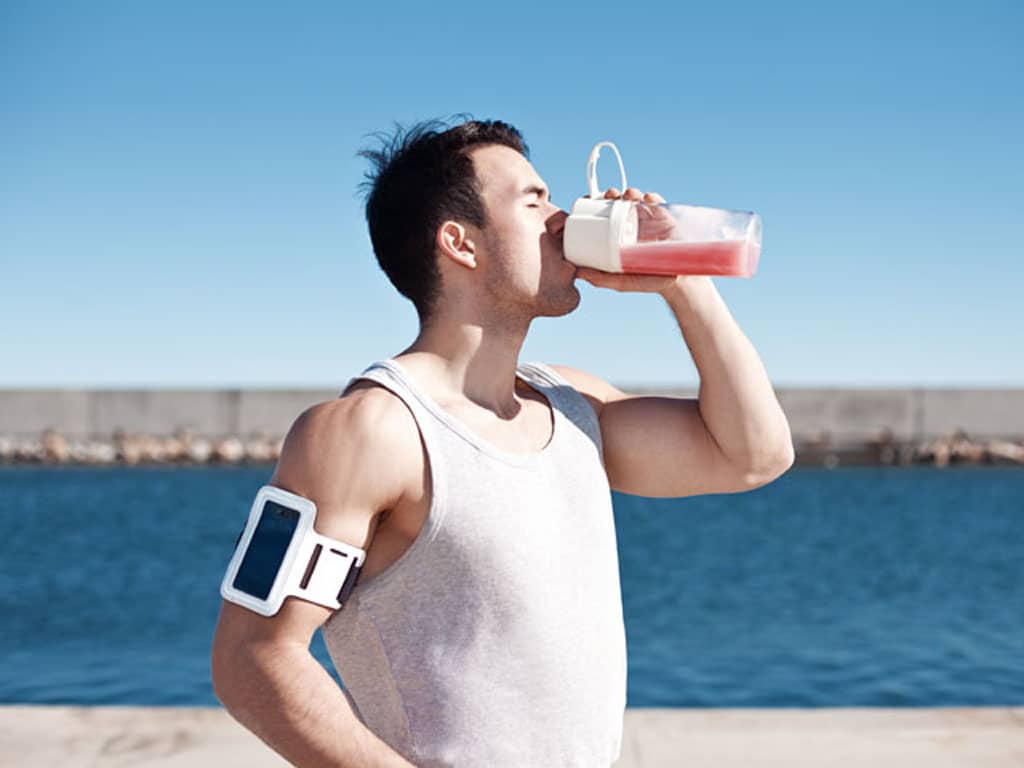
Vitamin D
Did you know that vitamin D is usually shrugged off in the athletic community? It may thus come as no surprise that researchers found that 40% of runners may be deficient in vitamin D.
Vitamin D status and athletic performance
- Adequate vitamin D levels enhance muscle strength and physical performance and reduce risks of stress fractures.
- Vitamin D augments the size of fast-twitch muscles.
- The vitamin may improve balance and reaction times.
“With enough D,” explains John J. Cannell, M.D., president of the Vitamin D Council, “you’ll run longer and faster, recover more quickly, and suffer fewer injuries.” ‘Nuf said?
Before supplementing with vitamin D, I strongly suggest you get tested – your physician will then determine what dose you’d benefit from. It is also advised to do follow-up tests regularly.

Words of caution
- Focus on real foods to obtain all the nutrients you need – supplements will not offset an unhealthy diet.
- This cannot be stressed enough: before taking any new supplement, get your physician’s opinion first. Remember that unnecessary supplementation may not only have no additional beneficial effects on performance but it can also be deleterious to your health.
- When selecting supplements, make sure to read the ingredient list – cheaper brands often contain fillers and stabilizers.



